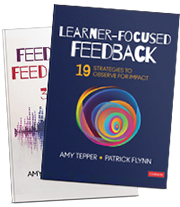Fall in New England is one of our favorite times. Though it announces the onset of winter (much to Amy’s disappointment as a Floridian), who can resist the foliage, apple picking, pumpkin patches, and of course, the resulting warm apple fritters on a crisp Saturday autumn morning (Patrick’s favorite)?

Oblivious, we tromp around in corn mazes and sip cider completely unaware of the time-consuming and complex work that is at hand during harvest time. Beyond the obvious laborious gathering of the crops, those who are harvesting must successfully leave the field ready for the next season, must cautiously remove weeds that may hinder future growth if unattended, and identify which of the crops are overripe that need to be left behind to nourish the soil. The harvest is actually the most labor-intensive and challenging part of the season for farmers.
Our Fields of Gold

You have a lot in common with farmers if you work in schools. You are up at dawn, you plant seeds, nurture them, and watch them grow. To measure how we are impacting our seedlings in our classrooms, it is important to become proficient growers and harvesters. Those who support teachers, (instructional leaders, mentors, coaches, and peers) must learn to carefully and consistently gather evidence of teaching and learning to truly measure if the seedlings are getting enough water (scaffolding and sharing responsibility) or need more fertilizer (small group support). And much like harvesting crops, this proves to be one of the most complex jobs an observer has…because learning is complex.
Harvesting lays the foundation for future crops as evidence-collection lays the foundation for feedback to feed forward. If you are not collecting comprehensive, specific, and quantitative and qualitative evidence, you will struggle to:
- Accurately determine a teacher’s impact on learners
- Identify appropriate or accurate high leverage growth area(s) with a teacher
- Engage in difficult objective conversations
Perhaps you already know how to drive a tractor or pick a pumpkin, but you might find as an observer,

- You are unsure of what to collect
- You are missing critical evidence
- Too much is happening at one time and you feel overwhelmed
Integrating live classroom visits with video-based review are of great benefit to teachers, allow you to develop your skills as an observer, and will help you solve for some of these dilemmas. Keep in mind, however, that engaging with learners in real time is invaluable. Just remember that you are human and that becoming an effective harvester takes time and practice. However, we have some solutions that will ensure you maximize your time in classrooms this season.
Challenge: “I am unsure of what to collect.”
Solutions:

- Take the time to process ahead of visits what is available for you to collect in a classroom. It is bountiful!
- Unpack your instructional framework (Strategies 1-6 from Feedback to Feed Forward) with your teachers so you align your evidence-collection to expected teaching and learning and they know why you are engaging with learners during a lesson. Then, identify the quantitative and qualitative evidence you can and should collect. For example, to determine how a teacher impacts learners’ understanding of “purpose,” you will want to capture a teacher’s quotes in introducing the day’s learning, time stamps of when he/she returned to it, descriptions of how he/she engages students in owning it like turn and talks, quotes from students when asked about the purpose and broader context, which will allow you to then count the number of students who understand the purpose and bigger why.
- Use Strategy 8 to guide your evidence collection especially early in the year, during goal setting time, or when staff is new to you. This allows you to maintain a broad lens. It is what we are seeking to understand each time we visit a classroom – even if we are focusing on a single practice or outcome. Think: What evidence would you need to collect to answer the questions under each?

Challenge: “There is too much to collect.”
Solutions:
- Practice just observing for small portions of your framework like how students are engaging in discourse or how they are using resources.
- When you have a better understanding of what you are collecting, think about how you are collecting it so your actions are purposeful. Are you listening to teaching and learning (Strategy 14), viewing teaching and learning (Strategy 15), and interacting with learners (Strategy 16)? Check out this resource to help you.
- Practice with your evidence-collection tools as sometimes they are working against you. Are you using a phone to take pictures of student work for analysis later? Are you mapping the classroom to quickly take notes on each learner? Resist the urge to script the entire lesson.
Reaping the Harvest’s Bounty
In last month’s blog, we suggested you plan for visiting classrooms and supporting teachers, blocking time on your schedule. Is this working for you? Remember, finding the time is only half the battle. Using the time to maximize your 10-15 minute visits to assess impact requires skillful evidence collection. The more often you visit classrooms, engage with learners, unpack lessons with others, reflect on your own effectiveness, and try again-–the more effective and efficient you will become.
You can cultivate a culture of learning in your school by cultivating a culture of observation and feedback. Through purposeful harvesting and attention from many hands, your seedlings and crops will produce tenfold season after season from your care and support!
What will you cultivate this year?
Let’s stay connected! Sign up for more from Tepper & Flynn or share this link with your friends so our community of teachers & learners grows!






Leave a Reply